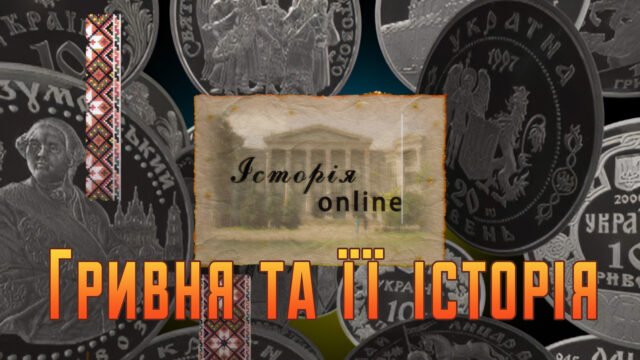Hryvnia and its history: the path of the Ukrainian currency through the centuries
We decided to go back to the roots and remember our past. Twenty years ago, inspired by the events of the Orange Revolution, Ivan Kanivets and Volodymyr Kashtanov decided to create a project that would restore interest in history. Its goal was to remind our citizens of important facts that should have been learned in school, but which for various reasons were overlooked.
We saw an opportunity to combine educational content with an entertaining format, making history more accessible and interesting. Our mission was not only to tell about the past, but also to inspire people to explore it deeper, visit museums, and appreciate Ukraine's cultural heritage. As part of this idea, we planned to create a series of 20 episodes. However, due to limited resources, we were able to shoot only three episodes, which later became part of the project in a modified form "Ukrainian Episodes".
Today, on the occasion of the online premiere, we have updated the image quality of the series "History Online". We converted it to HD and added Ukrainian and English subtitles. We dedicated one of the episodes to a topic that has a direct impact on the lives of every Ukrainian - the history of the hryvnia.
The Hryvnia: from Kievan Rus to the Present
The hryvnia is not just a currency that we use every day. It is a symbol of independence, economic stability, and intergenerational ties. Its history goes back centuries, as back in the days of Kievan Rus the hryvnia was the main currency and weight unit.
Origin of the name
According to most researchers, the word “hryvnia” comes from the Old Rus word “ hryva”, which meant part of the neck. Initially, hryvnias were gold and silver hoops worn around the neck as an ornament or status symbol. Later, the term was applied to silver bars used as money.
Hryvnia in Kievan Rus
In the tenth and thirteenth centuries, the hryvnia was made of silver bullion. There were several weight standards. They served as the main currency in the international and domestic trade of Kievan Rus. Over time, the hryvnia changed: kunas, rezans, and other means of payment appeared.

The decline and revival of the hryvnia
After the decline of Kievan Rus and the Mongol invasion, the hryvnia gradually lost its value. At various times, Polish zlotys, Russian rubles, carbovants, and other currencies were used on Ukrainian lands.
The first attempt to revive the hryvnia as a national currency took place in 1918 during the existence of the Ukrainian People's Republic (UPR). However, due to political instability and the onslaught of the Bolsheviks, the hryvnia failed to gain a foothold.
The modern hryvnia
It was only in 1996, after Ukraine gained independence, that the hryvnia was officially returned to circulation. It replaced coupon-karbovanets, which temporarily served as the national currency. Modern hryvnias have a high level of security and are among the most beautiful banknotes in the world.
Why is it important to know the history of the hryvnia?
Currency is not just money. It reflects political, economic and cultural changes in a country. By studying the history of the hryvnia, we better understand the ways of Ukraine's development, its challenges and achievements.
In this issue of History Online, we describe in detail all the stages of the hryvnia's development, from its appearance in Kievan Rus to its current form.
📽 Watch the full episode on our YouTube channel and learn more about the history of the Ukrainian hryvnia!
Want to support the project?
Buy works by Ivan Kanivets - historical novel "Tsingtao-Wien-Kyiv" or electronic collections of short stories in English Ukrainian stories of life and fight: volume I and Ukrainian stories of life and fight: volume II.
Or buy us a coffee!
Watch other episodes of History Online!
Episode 2 “Pectoral and gold of the Scythians”
Archaeologists have found luxurious gold items in Scythian burial mounds in Ukraine, including the famous burials in Tolstaya Mogyla, Solos, and Hayman's Grave. One of the most famous artifacts is a gold pectoral, a chest ornament that demonstrates the exceptional level of skill of ancient jewelers.
A documentary from the History Online series about the life of mammoth hunters who inhabited the territory of Ukraine 20,000 years ago.
See other projects kilok.art!
The documentary "Ukrainian Revolution, memories of Vseolod Petriv" - Vsevolod Petriv's memoirs tell about his participation in the First Liberation War of 1917-1921.
The documentary "Neptune's Trident” – April 29 became the Day of the Fleet of the Ukrainian People's Republic. On this day in 1918, the Black Sea Fleet raised the Ukrainian flag.

